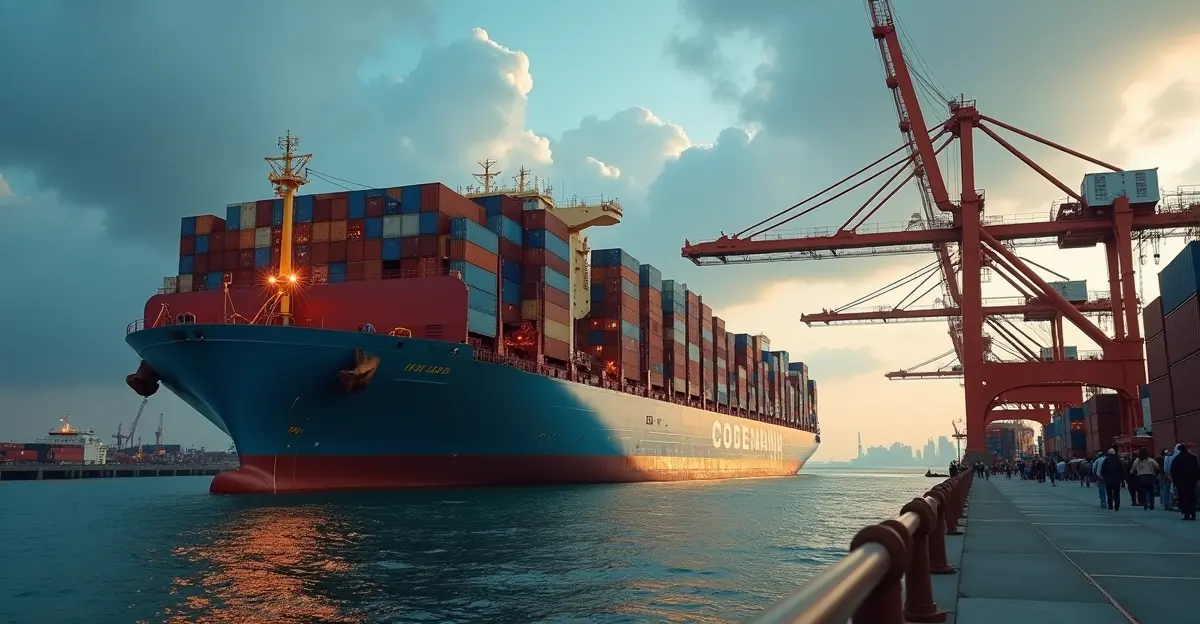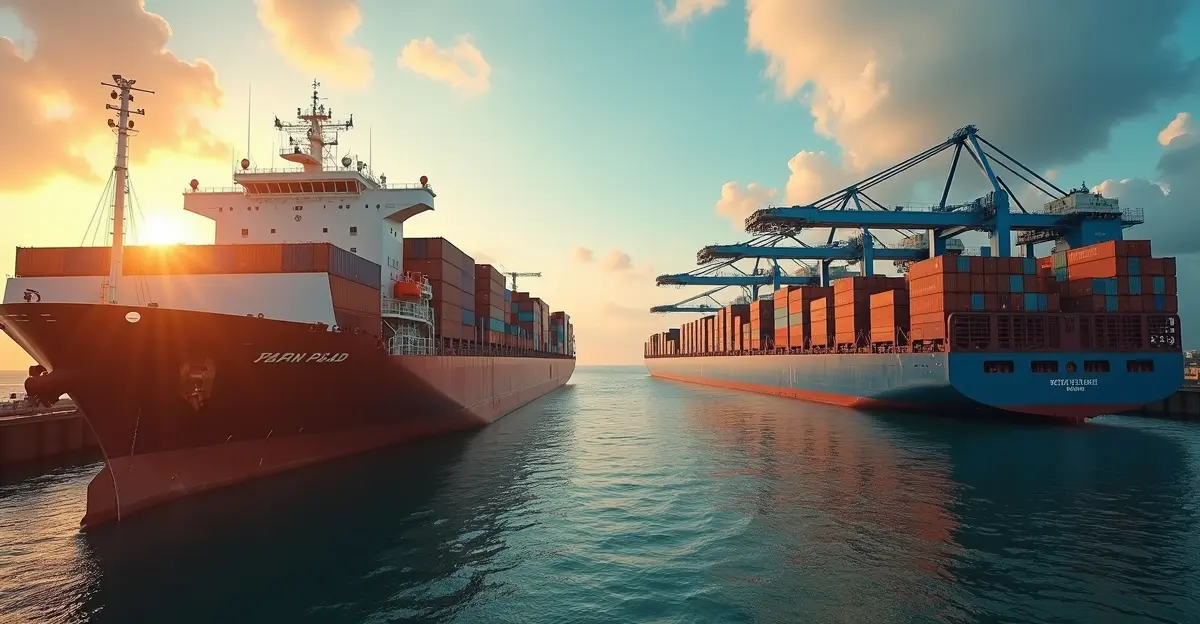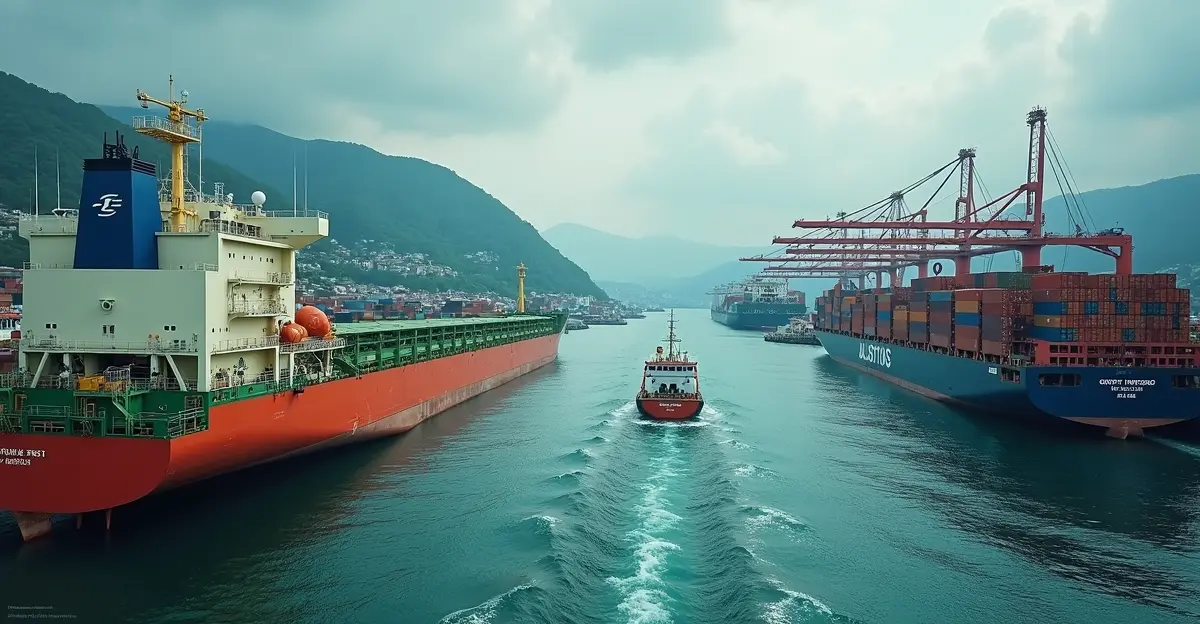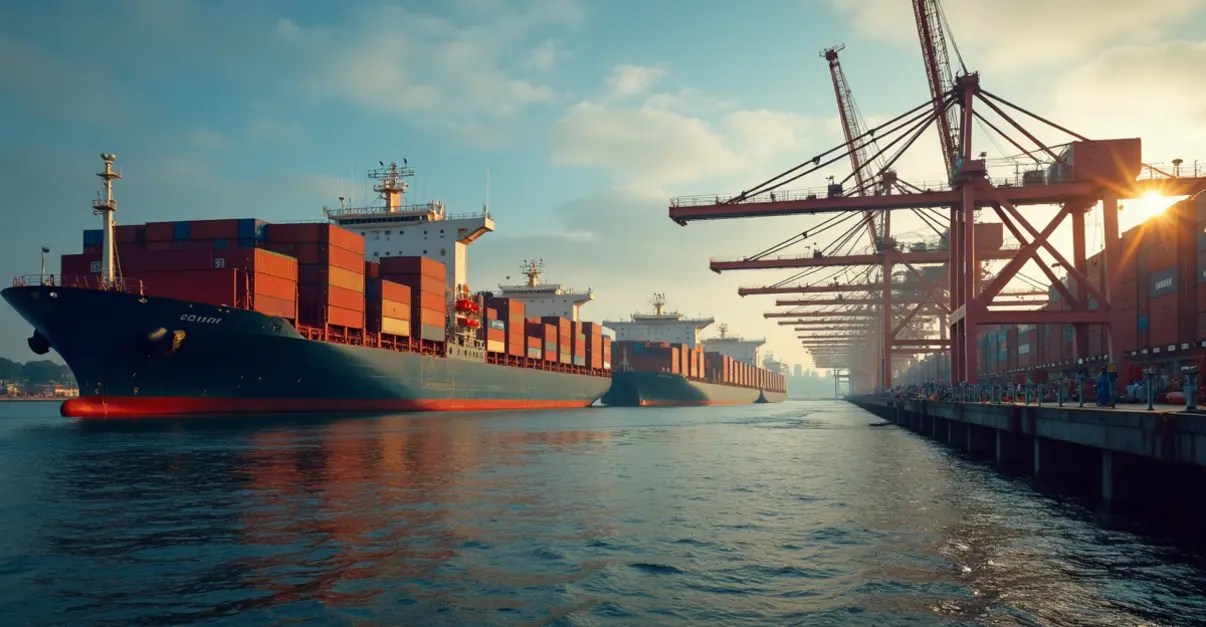Global shipping faces unprecedented crisis with 300% port delay surge, forcing route diversions and driving costs 20-40% higher. Labor strikes, infrastructure gaps create perfect storm affecting 96% of major ports worldwide.

Unprecedented Port Congestion Creates Global Logistics Nightmare
The global shipping industry is facing its most severe crisis in decades as port delays surge by 300% in June 2025, affecting 96% of major container ports worldwide. Critical hubs like Rotterdam, Singapore, and Cape Town are experiencing extreme delays of 6-10+ days, with vessels waiting offshore for multiple days before being able to dock. 'We've never seen anything like this in my 25-year career,' says veteran shipping analyst Ella Popescu. 'The ripple effects are devastating supply chains across every industry.'
Alternative Routes Emerge as Primary Solutions
With traditional shipping corridors becoming increasingly unreliable, companies are scrambling to find alternative routes. The Red Sea crisis has forced vessels to reroute around Africa's Cape of Good Hope, adding 14-18 days to European routes and driving ocean freight rates to double their pre-crisis levels. According to the UNCTAD Review of Maritime Transport 2025, this has created 'stormy seas for global shipping' with uncertainty, volatility and rising costs becoming the new normal.
Financial Impact Reaches Critical Levels
The economic consequences are staggering. Demurrage fees range from $75-300 per container daily, while freight rates on Shanghai-Rotterdam routes have increased by 230%. Overall shipping costs have risen 20-40%, with China-US West Coast rates jumping to $5,025 per forty-foot equivalent unit (FEU). 'Smaller companies are facing bankruptcy due to these escalating logistics costs,' notes Popescu. 'The $150 million revenue loss at Manzanillo due to customs strikes shows how vulnerable our global system has become.'
Labor Strikes and Infrastructure Gaps Compound Problems
Labor strikes are affecting 60% of ports globally, with Rotterdam facing indefinite strikes at APM Terminals and Singapore contending with vessel bunching and 85% yard capacity utilization. Infrastructure gaps are becoming increasingly apparent as ports struggle to handle the volume. Recent analysis shows that global vessel on-time performance has dropped to just 58.7% - the lowest reliability in two years.
Shippers Adapt with New Strategies
In response to these challenges, shippers are implementing creative solutions. Many are adding 3-5 weeks of buffer stock to their supply chains, while others are shifting to air freight, which has seen demand increase 19% year-over-year. The search for alternative corridors has led to Africa emerging as a new transshipment hub, with Red Sea volumes down 90%. 'Companies that invested in supply chain diversification before this crisis are now reaping the benefits,' observes Popescu. 'Those who didn't are paying the price.'
Long-Term Outlook Remains Uncertain
The Suez Canal is not expected to resume full operations until at least 2026, meaning elevated shipping costs are likely to persist. Environmental regulations, geopolitical tensions, and capacity constraints continue to pressure the industry. However, technological advancements in AI-driven route optimization and blockchain implementation offer hope for future efficiency gains. 'This crisis is forcing the industry to innovate faster than ever before,' concludes Popescu. 'The shipping world that emerges from this will be fundamentally different from what we knew.'

 Nederlands
Nederlands
 English
English
 Deutsch
Deutsch
 Français
Français
 Español
Español
 Português
Português









